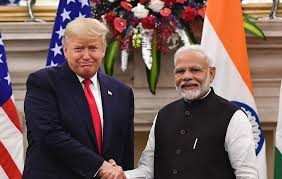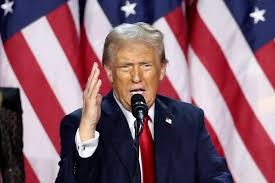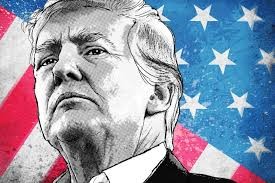My Article published on the Indus International Research Foundation website on 14 Nov 24.
Inflation, public debt, and geopolitical tensions have shaped recent strategic economic policies. Governments are taking a cautious approach to monetary policies to gradually ease inflation, ensure fiscal sustainability, and promote economic growth. Internationally, the financial focus has increasingly turned to fostering resilience through reshoring, friend-shoring, and decoupling trade policies that diversify supply chains amid shifting global dynamics. In response to the fragility revealed during the pandemic and recent geopolitical tensions, nations are incentivising local and allied-country manufacturing to reduce reliance on single sources like China. These strategic shifts aim to fortify economies against future disruptions.
Strategic Economic Policies.
Strategic economic policies are initiatives and frameworks that governments use to shape their national economy in ways that promote long-term goals, enhance competitiveness, safeguard critical industries, and adapt to global economic shifts. These policies address specific economic, social, and political objectives, often encompassing trade, technology, workforce development, and environmental sustainability. These include:-
-
- Industrial Policy. Support for critical industries, such as renewable energy, semiconductors, or biotech, often through subsidies, tax incentives, or direct government investment. These policies aim to foster innovation and secure leadership in high-growth sectors.
-
- Trade Policy. Tariffs, trade agreements, and export controls can protect domestic industries, open new markets, and safeguard national interests. Trade policy also includes mechanisms like friend-shoring and decoupling to strengthen alliances and reduce dependencies on rivals.
-
- Innovation and R&D Policy. Government funding and tax incentives for research and development can accelerate technological advances and maintain a competitive edge in AI, 5G, and green tech sectors.
-
- Workforce Development and Education. Investing in education and workforce training aligns skills with market needs, addressing tech, healthcare, and manufacturing gaps. This boosts employment and productivity in strategic industries.
-
- Sustainability and Environmental Policy. Incentives for renewable energy, carbon taxes, and green investments are designed to transition the economy towards sustainability, address climate change, and capture economic benefits from emerging “green” industries.
-
- Infrastructure Investment. Strategic investments in transportation, digital infrastructure, and energy grids support productivity and resilience. Recently, emphasis has grown on building secure digital infrastructure, including 5G networks and cyber security.
-
- Capital and Investment Policy. Policies to attract foreign direct investment (FDI) in strategic sectors while protecting sensitive areas from foreign control, such as financial regulations or screening of FDI in national security sectors.
Strategic economic policies are especially significant in facing challenges like globalisation, geopolitical competition, and technological disruption. They allow governments to take proactive measures that guide their economies toward resilient and sustainable growth.
Reverse Globalisation
“Reverse globalisation” refers to a slowdown or reversal of globalisation trends, where countries move away from increased international integration and, instead, emphasise national and regional independence. This shift is often driven by political changes, economic protectionism, supply chain disruptions, or cultural movements against global homogenisation. Several influences encourage reverse globalisation.
Economic Nationalism. Countries may favour domestic industries over foreign competition through tariffs, subsidies, or trade restrictions. Examples include the U.S.-China trade war and the push for “Made in [Country]” policies to boost local economies and jobs.
Supply Chain Reconfiguration. Recent supply chain vulnerabilities, especially highlighted during the COVID-19 pandemic, have driven companies to “reshore” or “nearshore” manufacturing. This shift is often motivated by the need for resilience and security rather than solely cost efficiency.
Immigration and Labour Policies. Reverse globalisation often includes stricter immigration policies, as seen in countries aiming to prioritise local employment. Countries might enact more stringent visa policies or limit foreign workers to reduce reliance on global labour.
Digital and Information Sovereignty. Reverse globalisation also affects technology and information policies, with countries creating data localisation laws and internet restrictions to safeguard digital sovereignty. Examples include China’s Great Firewall, the EU’s GDPR, and India’s data localisation requirements, all of which attempt to control information flows.
Political Populism and Nationalism. A rise in nationalism and populist politics has fuelled reverse globalisation. Leaders who emphasise “taking back control” often support policies that reduce international dependencies. Brexit is a prime example; the UK voted to leave the EU, a move partially driven by nationalist sentiments.
Environmental Concerns and Localism. Environmental movements argue that reducing global trade can lower carbon emissions by minimising the need for long-distance shipping and production. This has led to a push for local sourcing and sustainable production practices, sometimes aligning with anti-globalisation ideals.
Reverse globalisation reflects a complex recalibration rather than a complete abandonment of globalisation. The world remains interconnected in many essential ways, but often with a renewed focus on autonomy and resilience.
Recent Strategic Economic Policies
Recent economic policies indicate a broader trend toward economic resilience and diversification, with long-term strategies to sustain growth amidst uncertainty. Decoupling, friend-shoring and reshoring are strategic economic policies that reduce reliance on nations viewed as strategic competitors, especially in high-stakes areas like technology, energy, and critical supply chains.
Decoupling. “Decoupling” refers to reducing or severing economic interdependence between countries, particularly with rivals, to avoid vulnerabilities. It often focuses on critical industries like technology, energy, and defence. For example, in recent years, the U.S. and some of its allies have sought to decouple parts of their technology supply chains from China. This may involve encouraging companies to source components or raw materials from domestic or allied suppliers rather than potential strategic rivals. Decoupling involves measures like:-
-
- Restricting Technology Transfer. Limiting the export or sharing of technology could enhance a competing nation’s capabilities.
-
- Diversifying Supply Chains. Shifting manufacturing and sourcing from a competitor country to other nations or domestic markets often involves “friend-shoring.”
-
- Restricting Investments. Regulating or prohibiting investments in specific sectors or companies within another nation.
Reshoring. Reshoring brings manufacturing and production activities back to a company’s home country or a region closer to home. This trend has gained traction recently as companies and governments seek to reduce their dependence on distant foreign suppliers, especially after the COVID-19 pandemic exposed vulnerabilities in global supply chains. Concerns about trade tensions, geopolitical risks, and the drive to secure critical industries (like semiconductors and pharmaceuticals) have further fuelled the reshoring movement. Key motivations for reshoring include supply chain resilience, local economic Incentives, better labour and quality control, sustainability, and consumer demand. For example, several countries are enacting policies to bolster semiconductor manufacturing domestically.
Friend-shoring. “Friend-shoring is an economic and trade strategy in which countries or businesses shift production and sourcing to nations with similar political values or solid diplomatic relations rather than relying on countries with potential geopolitical or economic conflicts. The goal is to enhance supply chain security, reduce reliance on politically unstable or adversarial regions, and build resilience by working with reliable partners. “Friend-shoring” is a more collaborative approach, aiming to secure critical supply chains by relocating them to nations with shared values or alliances. The idea is to build resilient networks within trusted partner countries to reduce risks from unpredictable or adversarial states. For instance, nations might establish manufacturing facilities or resource procurement operations in allied countries, creating a network of trade partners that align economically and politically. This strategy has gained traction as global supply chains have faced challenges from trade disputes, the COVID-19 pandemic, and regional tensions. It’s a middle ground between total globalisation and complete “reshoring” (bringing production back to the home country), allowing countries to balance security concerns with cost efficiency by collaborating with allied nations.
Nearshoring. Nearshoring is a strategy where companies relocate their manufacturing or services closer to their primary market, often to neighbouring countries. This approach has gained traction due to its potential benefits and strategic advantages. By positioning suppliers closer to consumers, businesses can significantly shorten delivery times. This improves customer satisfaction and enhances inventory management by decreasing the time products spend in transitNearshoring can lead to reduced logistics and transportation costs, especially when compared to distant locations like China. Proximity allows companies to minimise shipping expenses and inventory holding costs. Many nearshoring destinations offer access to a skilled and competitive labour force. The workforce is generally well-trained and capable of meeting production standards, which can be crucial for maintaining quality while reducing costs. Nearshoring also helps diversify supply chains, reducing reliance on a single location. This is particularly important in times of geopolitical tensions or natural disasters.
Decoupling aims to safeguard national security, protect sensitive industries, and reduce exposure to risks posed by economic interdependence with rival nations. However, the complex process can have widespread economic implications, affecting trade, innovation, and global supply chain resilience. Reshoring, friend-shoring, and nearshoring offer a compelling alternative to traditional offshore manufacturing. They reflect a broader trend toward regionalising supply chains and securing economic independence in an increasingly uncertain global landscape. These policies reflect a wider shift toward financial security and strategic resilience, prioritising political and security considerations in trade and supply chain decisions.
Your valuable comments are most welcome.
For regular updates, please register your email here:-
References and credits
To all the online sites and channels.
References:
- Medhora Rohinton P, “Is Globalization in Reverse?” Centre for International Governance Innovation, 09 Feb 2017.
- Schneider-Petsinger Marianne, “The New Era of Reglobalisation.” Chatham House, 2023.
- Dhingra, S., & Sampson, T. “Brexit and the Future of Global Trade.” VoxEU.org.
- Cerdeiro, Diego A., Rui Mano, Johannes Eugster, Dirk V. Muir, and Shanaka J. Peiris. “Sizing Up the Effects of Technological Decoupling.” International Monetary Fund, March 12, 2021.
- Tellis, Ashley J. “Interdependence Imperiled? Economic Decoupling in an Era of Strategic Competition.” National Bureau of Asian Research, November 9, 2023.
- Golichowski, M., & Satapathy, N. (2024). “How reshoring is transforming the way supply chain models function”. EY Global.
- Weissman, R. “Is There Momentum for Reshoring in 2024?”, Octopart.
- Kraft, D. “Reshoring: Why It Matters and How Companies Are Adapting”. Harvard Business Review. (2024).
- Graham, N., & Rashid, M. “Is ‘friend-shoring’ really working?” Atlantic Council. (2023).
- Yellen, J. “Remarks on Friend-Shoring.” U.S. Department of the Treasury. (2022).
Disclaimer:
Information and data included in the blog are for educational & non-commercial purposes only and have been carefully adapted, excerpted, or edited from reliable and accurate sources. All copyrighted material belongs to respective owners and is provided only for wider dissemination.






